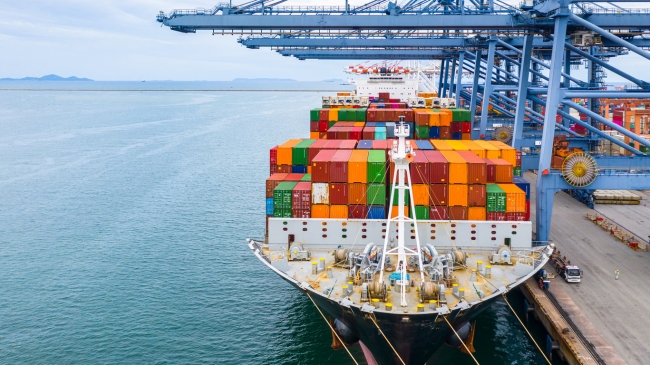2 minute read • published in partnership with Malcolm Nicholls
Feature: The impact of 3D printing technology on the sea freight sector
The sea freight industry is a major global enterprise operation with endless amounts of supply chains. Today, over 80% of international trade goods are carried by sea, and in 2020, about 1.85 billion metric tons of cargo were shipped globally. However, things in the sea freight industry aren’t always plain sailing, accidents happen, highly tested systems can fail, and parts will break.
Modern 3D printing is able to provide a handy solution to inefficiencies that crop up in the sea freight industry. Malcolm Nicholls 3D Printing delves a bit deeper into the waters and looks at the impact of 3D printing technology on the sea freight sector.
Reducing downtime
It can be costly when sea freight parts on ships and containers stop working and maintenance teams are called in. But 3D printing helps to bring parts and fixtures back to service considerably faster. As a result, 3D printing’s ability to ensure quicker repairs helps to increase profit margins and iron out inefficient uses of time in the sea freight sector.
Found a dent in a container? 3D-printed repair tools can help you take care of dent repairs in no time. Therefore, sea freight companies ought to keep their eyes out for reliable specialist providers of 3D printing on demand that they can use to get damaged sea freight and any parts and accessories back up and running promptly to minimise inefficiencies and losses.

Over 80% of international trade goods are carried by sea, and in 2020, about 1.85 billion metric tons of cargo were shipped globally / Picture: Getty/iStock
Bringing down inventory costs
Having an inventory of spare parts in a storeroom aboard a sea freight vessel can be expensive. Thanks to 3D printing and its ability to scan objects, sea freight providers will be able to reduce their excess inventory and hence run more cost-effectively.
Recreating discontinued parts
Over the years, sea freight parts will become outdated and some may be more difficult to find when it is time to replace them. The 3D printing of discontinued parts is a solution that could allow sea freight businesses to use older sea freight parts for much longer.
Limiting the sector’s carbon footprint
Marine pollution is putting fish and wildlife at serious risk across the world. As a result, the sea freight sector’s environmental impact is scrupulously scrutinised, and rightly so. 3D printing is an extremely energy-efficient solution that produces almost zero waste. Therefore, 3D printing is a fantastic way for sea freight companies to reduce their carbon footprint and do their bit to protect nature and keep our oceans clean.
These are just a few examples of the impact that 3D printing is having on the sea freight sector. 3D printing technology is truly coming to the fore in 2023, and it is only set to advance further, providing even more potential benefits to the sea freight industry.